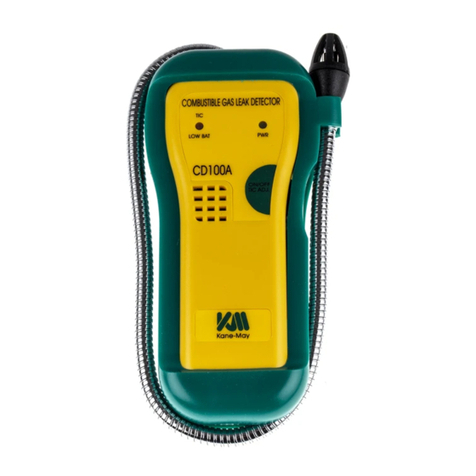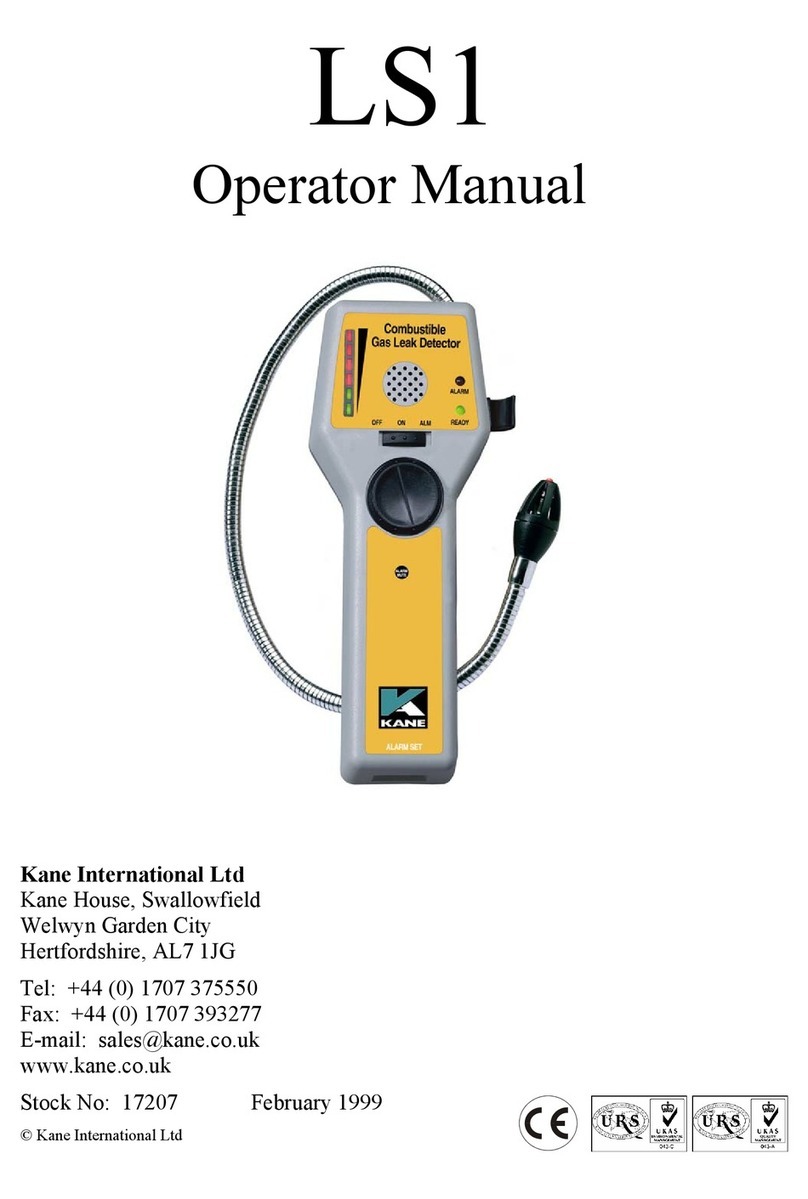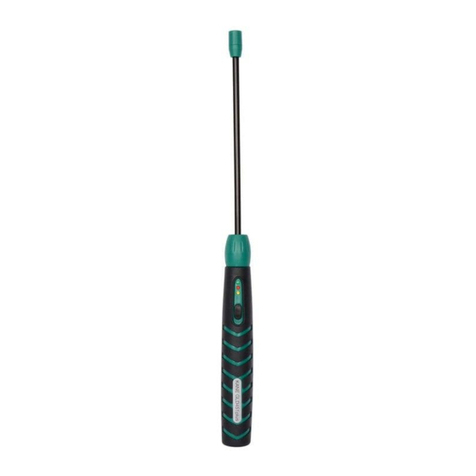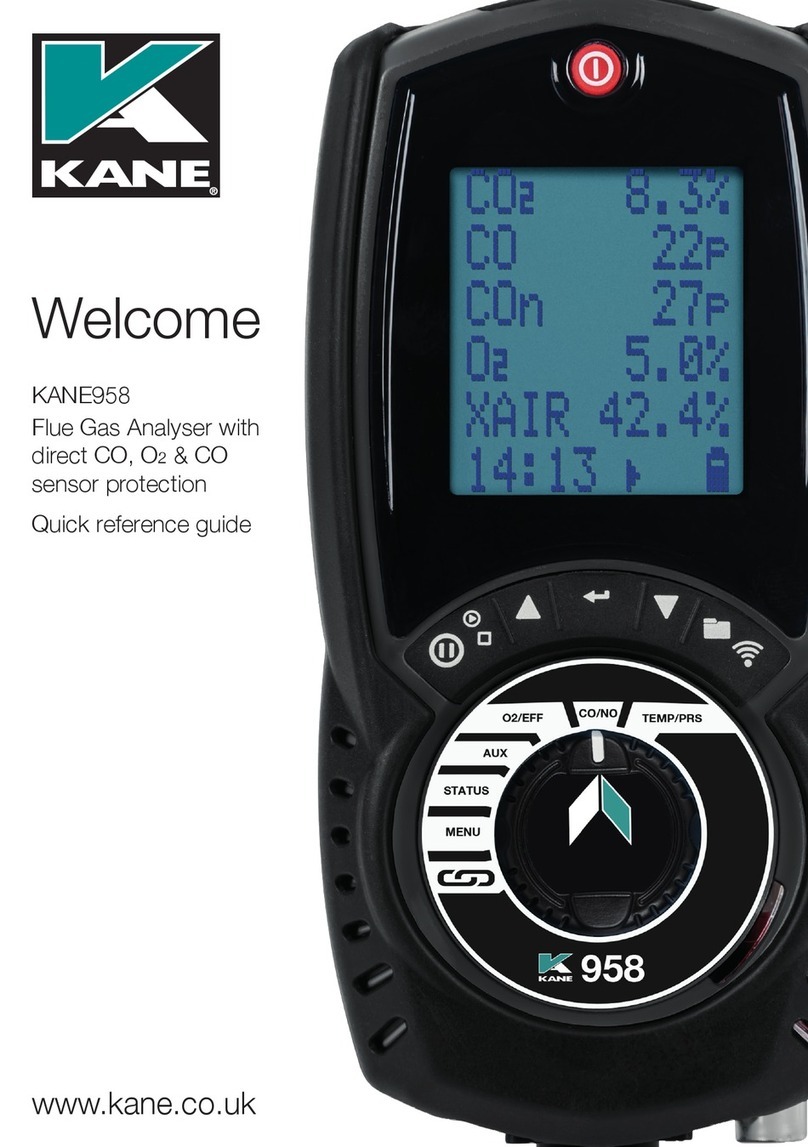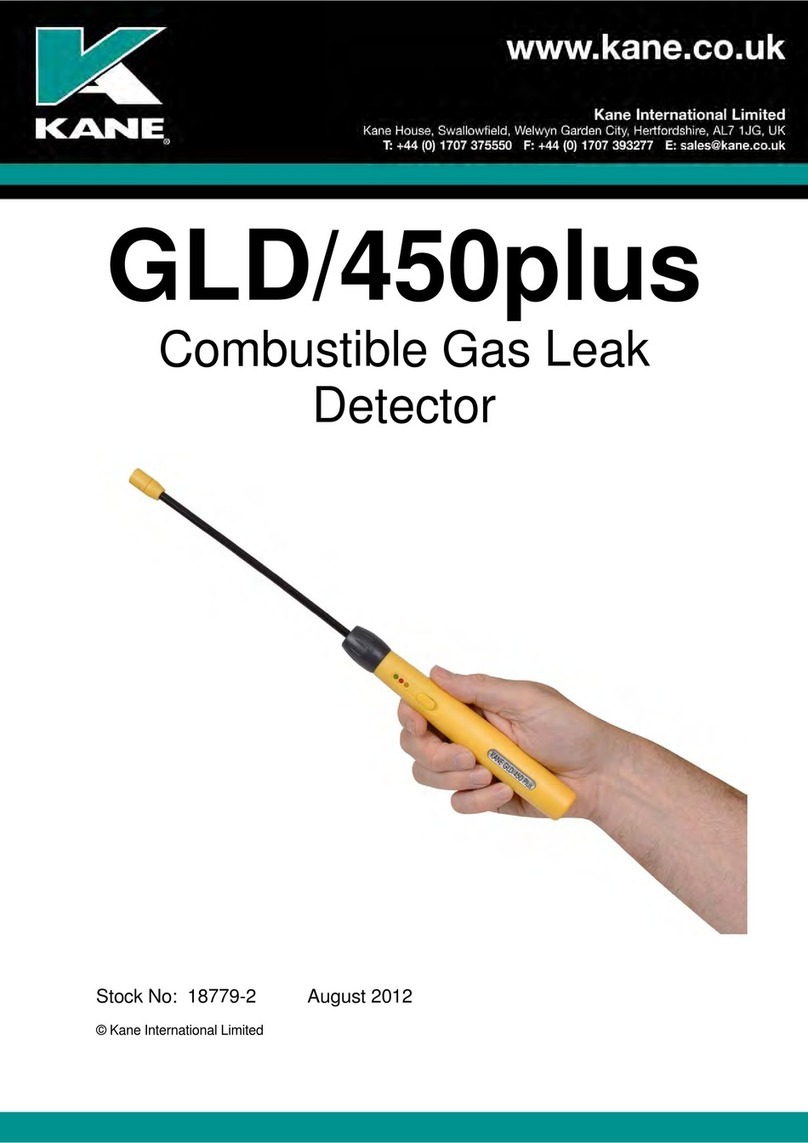ELECTROMAGNETIC COMPATIBILITY
The European Council Directive 89/336/EEC requires that electronic
equipment does not generate electromagnetic disturbances that exceed
defined levels and has an adequate level of immunity to enable it to be
operated as intended. The specific standards applicable to this product
are detailed in the appendices.
Since there are many electrical products in use that pre-date this
Directive and may emit electromagnetic radiation in excess of the
standards defined in the Directive there may be occasions where it would
be appropriate to check the detector prior to use. The following
procedure should be adopted:
Go through the normal start up sequence in the location where the
equipment is to be used.
Switch on all localised electrical equipment that might be capable
of causing interference.
Check that all readings are as expected. (A level of disturbance in
the readings is acceptable). If not adjust the position of the
instrument to minimise interference or switch off, if possible, the
offending equipment for the duration of the test.
At the time of writing this manual (Feb 1999) Kane International Ltd is not
aware of any field based situation where such interference has ever
occurred and this advice is only given to satisfy the requirements of the
Directive.





